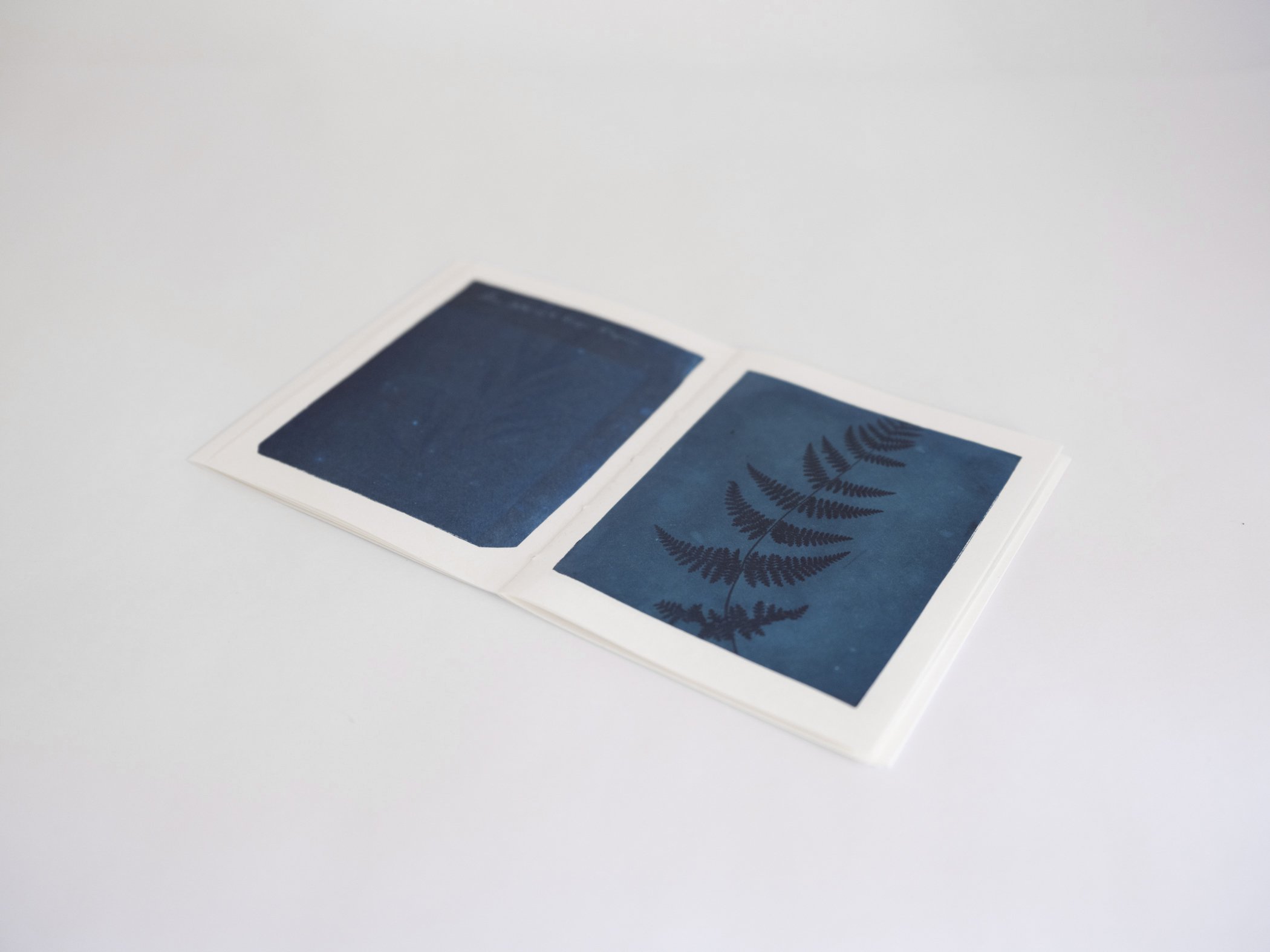Cyanotype Artist Books
2017-2019
Alongside founding Dust Collective, I began self-publishing cyanotype-based artist books. Cyanotype, an alternative analog process that involves chemistry, UV light, and water, allowed me to explore both the physical qualities of the medium and the rich history of photography.
Installation image from What Photography Is
Eleanor D. Wilson Museum, Roanoke, VA, 2022
Click on book titles to view them on Dust Collective website.
A Short History of Cyanotype explores how invention of photography was shaped by the fields of chemistry, botany, and astronomy, and driven a social circle that included William Henry Fox Talbot, John Herschel, and Anna Atkins.
Using the earliest photographic processes, William Henry Fox Talbot made dozens of botanical prints. John George Children, a botanist, studied Talbot’s prints, and shared them with his daughter, Anna Atkins.
In 1842, British astronomer John Herschel invented cyanotype printing, and within a year, Anna Atkins began her photographic work.
Today, Anna Atkins is recognized as the first female photographer. Her work, Photographs of British Algae: Cyanotype Impressions (1843) is considered the first photographically illustrated book.
In 1854, William and Frederick Langenheim made seven daguerreotypes of the total solar eclipse — the first eclipse visible in North America since the invention of photography.
Under the light of the eclipse in August 2017, I reprinted Langenheim’s images as cyanotypes, a photographic process that uses sun-sensitive paper for exposure.
I made negatives from the original daguerreotypes, and used them to print the cyanotypes. The sun comes through the light areas of the negative, exposing the cyanotype paper beneath to blue.
163 years later, images made by the light of one eclipse are printed with the light of another.
During the 2017 winter solstice, the shortest day of the year, Emily Sheffer created a cyanotype of the same image for every hour of daylight. As the day passed, the cyanotypes faded, disappearing entirely by the final 4p.m. exposure. She repeated this process during the 2018 spring equinox over the course of twelve hours.
The resulting accordion books reference the Earth’s rotation through the seasons and the effect of light and time on photographic materials.






